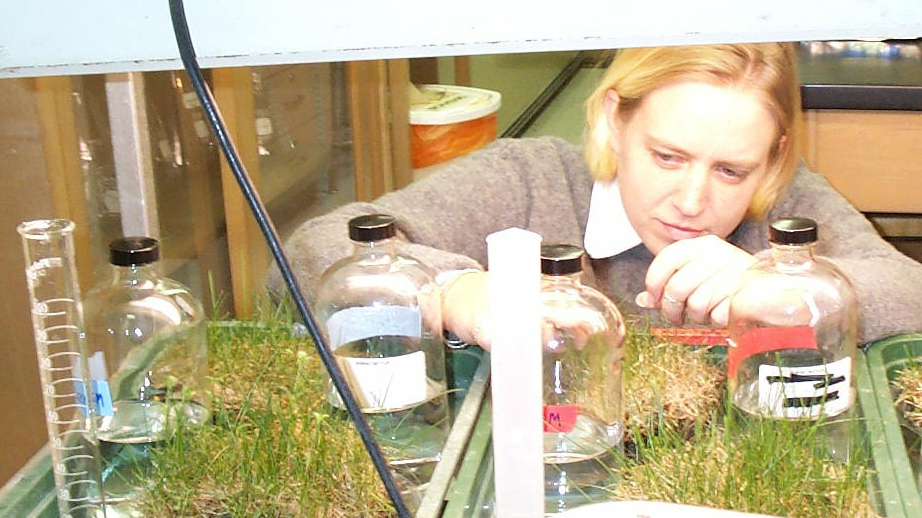 Plant Physiology Class of Spring 2000 studies salt tolerance of grass.
Plant Physiology Class of Spring 2000 studies salt tolerance of grass. Plant Physiology Class of Spring 2000 studies salt tolerance of grass.
Plant Physiology Class of Spring 2000 studies salt tolerance of grass.
Plots of lawn grass were used to study how applied salts affect the growth and development of grass. Tested salts were those typically found in road salt, namely: NaCl, KCl, CaCl2, and MgCl2.

Grass growth in height was measured 3 times a week during the experiment. A ranked color chart was used to measure change in grass pigmentation.

Figure 1. Grass growth was promoted by lower concentrations of some salts but inhibited by higher concentrations of all salts except KCl.
|
|
Figure 2. Grass growth was inhibited in both length and width of the grass blade after treatment with increasing concentrations of salt. (Left to right 0.0 M, 0.025 M, 0.05 M, 0.1 M, and 0.2 M MgCl2.) |
|
Figure 3. Grass treated with low concentrations of salt retained their green color but treatment with higher concentrations of salt led to changes in color to yellow and brown. |
|
Salt concentration appears to have more of an effect on plant growth and development than type of salt. Low concentrations of magnesium and potassium in road salts may be beneficial as essential nutrients.